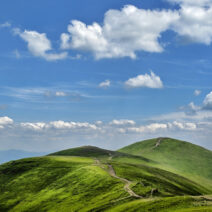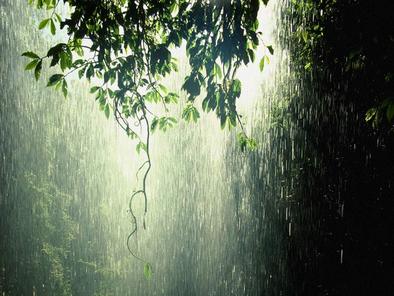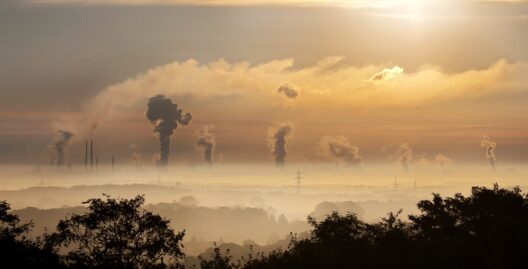Tropical rainforests are often hailed as the “lungs of the Earth,” contributing nearly a quarter of the world’s oxygen. But have you ever wondered what makes their climate so uniquely intoxicating, and how our changing planet poses a challenge to these vibrant ecosystems? The juxtaposition of relentless rainfall and the abundance of sunlight creates an environment that is not only teeming with life but also faced with increasing threats. In this exploration, we will delve into the intricate climate of tropical rainforests, the remarkable biodiversity they support, and the pressing challenges posed by climate change.
To start, let’s consider the climatic conditions that define tropical rainforests. Predominately located near the equator, these lush environments experience warmth and moisture year-round. The temperature typically hovers around 20 to 30 degrees Celsius (68 to 86 degrees Fahrenheit), with exceedingly high humidity levels averaging between 77% and 88%. This consistent warm climate is largely due to the direct overhead sunlight during most of the year, resulting in minimal seasonal variation.
Rainfall is a hallmark of the tropical rainforest climate, with annual precipitation ranging from 1750 to 2000 millimeters (69 to 79 inches). Some regions may receive even more, nurturing an incredibly diverse ecosystem. The rains come not just in showers but often in torrential downpours, creating a symphony of sounds as water cascades through the dense canopy. This constant moisture is paramount for the survival of the flora and fauna that thrive within this biome.
The tropical rainforest is characterized by its “everwet” climate, meaning that there is no true dry season. However, there are typically two peaks of rainfall during the year, aligning with solar cycles, which results in periodic fluctuations in water availability. Can you imagine the sheer abundance of life that flourishes in such conditions? The trees, which grow tall and mighty, reach for the sky, forming a thick canopy that shelters an array of understory plants. These plants have uniquely adapted to thrive in lower light conditions, showcasing the remarkable resilience of life.
The biodiversity found in tropical rainforests is astonishing. From the vibrant plumage of macaws soaring above to the minute insects that dance through the foliage, this environment boasts countless species. It is estimated that approximately half of the world’s plant and animal species can be found within these forests. The interdependence of these species is a delicate dance, where every organism plays a role in the broader ecological web. In this intricate system, pollinators like bees and butterflies help sustain plant reproduction, while predatory species keep populations in check, illustrating the interconnectedness that defines this ecosystem.
Despite their magnificence, tropical rainforests face dire threats primarily driven by human activity and climate change. Deforestation stands as the most formidable challenge, as vast swathes of forest are cleared for agriculture, logging, and urbanization. This not only reduces the habitat available for countless species but also releases stored carbon dioxide into the atmosphere, exacerbating global warming. How does one balance the need for land and resources with the preservation of these vital ecosystems? This question necessitates thoughtful consideration and innovative solutions.
Another significant challenge arises from the phenomenon of climate change itself. Increasing temperatures and altered precipitation patterns disrupt the longstanding equilibrium within these forests. Some researchers warn that shifting weather conditions could push certain species beyond their limits, leading to a decline in biodiversity. As habitats shrink and disappear, the consequences ripple through the food web, potentially resulting in irreversible damage. The resplendent ecosystems we cherish may face a future of uncertainty.
Moreover, the tropical rainforest climate is becoming increasingly unpredictable. Extreme weather events such as droughts and floods can occur more frequently due to climate change, putting immense pressure on the delicate ecosystems. Species that have adapted to specific climatic conditions may struggle to survive in altered environments. This notion highlights an ongoing conundrum: how can we mitigate climate change while fostering resilience in these extraordinary ecosystems?
Conservation efforts play a pivotal role in addressing these challenges while promoting sustainable practices. Initiatives aimed at reforestation, sustainable agriculture, and the establishment of protected areas can help preserve the existing biodiversity. Additionally, more sustainable practices must be encouraged within industries that rely on forest resources. Engaging local communities in conservation efforts is crucial, as their traditional knowledge can provide invaluable insights into sustainable land management.
People also have a role to play in this narrative. Advocating for policies that prioritize environmental protections, supporting ethical sourcing of products, and raising awareness about the importance of tropical rainforests are all essential actions. The interconnection between human well-being and healthy ecosystems cannot be overstated. By championing the preservation of tropical rainforests, we are not just advocating for nature but ensuring a sustainable future for generations to come.
In conclusion, the climate of tropical rainforests is undoubtedly wet, wild, and wonderfully complex. They are ecosystems rich in life, sustained by specific climatic conditions that continue to face unprecedented challenges. As we ponder our role in the survival of these irreplaceable resources, the question remains—how can we achieve equilibrium between development and conservation to protect the rainforests that are vital to our world? Finding balance is key, and it is through concerted efforts that we can hope to safeguard these majestic forests for posterity.






